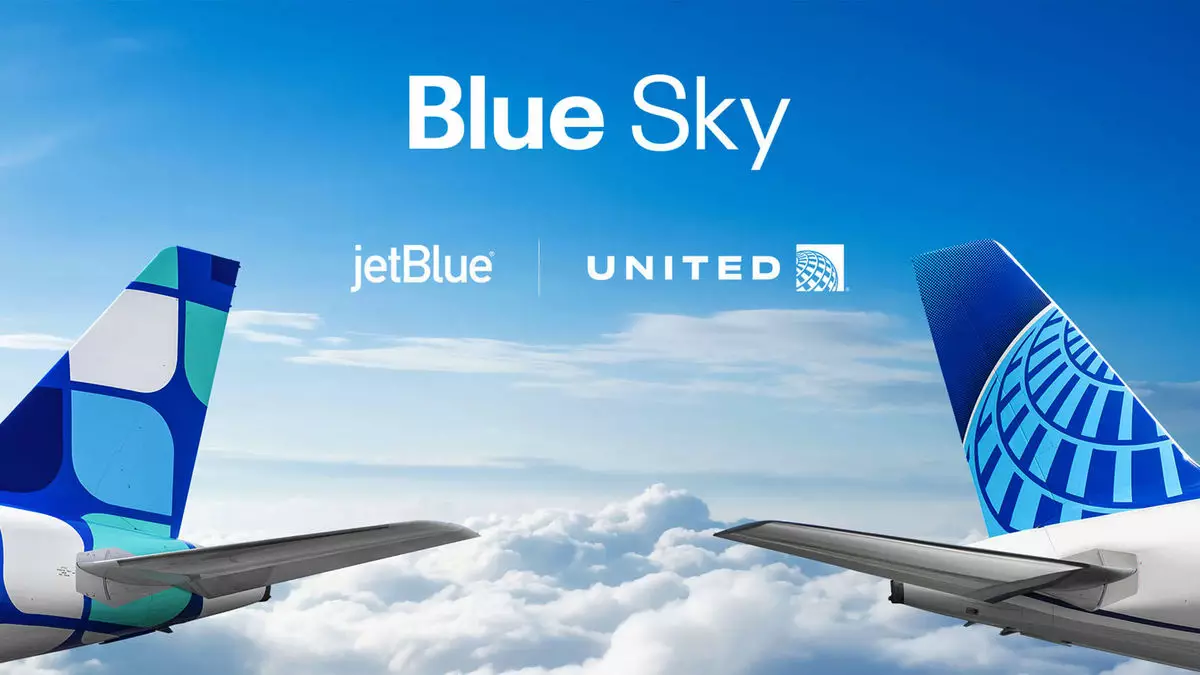The recent agreement between United Airlines and JetBlue marks a significant shift in the airline industry, especially as it relates to loyalty programs and competition in the Northeast. Announced on May 29, this partnership is designed to bring unprecedented benefits to the frequent flyers of both airlines, who will soon have the ability to accumulate and redeem loyalty points across both platforms. However, the larger implications of this deal for competition among airlines in New York and the Northeast present a complex picture that merits careful scrutiny.
Reciprocal Loyalty Benefits: A Game-Changer for Travelers
At the heart of the United-JetBlue partnership is a suite of reciprocal loyalty benefits. Members of United’s MileagePlus and JetBlue’s TrueBlue programs will enjoy shared advantages such as early boarding, upgrades, and free baggage allowances. This move stands to significantly enhance the travel experience for frequent flyers, offering them increased flexibility and value for their loyalty to either airline. Moreover, the ability to book United flights through JetBlue channels and vice versa takes customer convenience to a new level, making travel planning not just easier, but also more integrated.
Industry analysts like Gary Leff have a somewhat critical view of the partnership, suggesting that while it brings great benefits to United, the overall impact on consumers could be negative. The execution of this partnership resonates with JetBlue’s recent struggles in establishing a formidable competitive presence against larger players such as Delta and American Airlines. By aligning with United, JetBlue appears to sacrifice some potential synergies and competitive power that may have come from other partnerships, specifically the now-defunct Northeast Alliance with American Airlines.
Strategic Slot Exchanges: The JFK and Newark Equation
Another notable feature of this partnership is the strategic exchange of airport slots that will enhance operational flexibility for both carriers. JetBlue will provide United with critical slots at the congested JFK airport in exchange for gaining additional slots at Newark. The implications are substantial: United intends to re-enter JFK with up to seven daily roundtrips by 2027, a move that signifies its commitment to expanding its presence in one of the busiest air travel corridors in the country. Meanwhile, JetBlue will gain better access to Newark, further solidifying its operational footprint in the region.
Interestingly, Leff argues that the slots United will receive at JFK are of far greater value compared to JetBlue’s gain at Newark. Given United’s established brand presence, this could solidify its market position in a way that ultimately weakens JetBlue’s competitive edge. This exchange raises pivotal questions about the balance of power in the Northeast market—questions that will likely dominate discussions among industry experts for the foreseeable future.
Consumer Impact: A Double-Edged Sword
While the partnership promises new opportunities for loyalty program members, the overall consumer impact remains nuanced. Some analysts, including Brett Snyder, believe that this alliance could ultimately enhance competition in certain pockets of the Northeast, especially against a weaker American Airlines. He suggests that JetBlue will have new tactical advantages that could translate to improved offerings for consumers. However, the extent to which this impacts Delta, already a dominant player at JFK and LaGuardia, is questionable.
Furthermore, the absence of a codeshare agreement in favor of a simpler interline arrangement implies that both airlines will still operate independently in many respects. This means consumers may experience less seamless connectivity than what typically accompanies more integrated partnership models, shifting the competitive dynamics in unpredictable ways.
The Future of Airline Alliances
The United-JetBlue alignment unfolds against a backdrop of strained airline competition, particularly highlighted by the recent dissolution of the Northeast Alliance. This irregular partnership model seems to take heed of regulatory scrutiny that previously hampered more extensive collaborations. The current interline agreement suggests that other airlines might take a more cautious approach to their partnership strategies in the current regulatory climate.
In many ways, this deal embodies a trend toward strategic partnerships that prioritize specific benefits for frequent flyers while attempting to navigate regulatory frameworks. The potential for additional benefits for JetBlue’s TrueBlue members and United’s MileagePlus travelers looms large, hinting that deeper synergies could emerge as the partnership develops.
Navigating the complexities of this partnership will be crucial—not just for the two airlines involved, but for other players in the increasingly competitive Northeast aviation market. As the landscape evolves, the balance of power between low-cost carriers and traditional airlines is being tested, and the outcomes will be felt by consumers for years to come.

